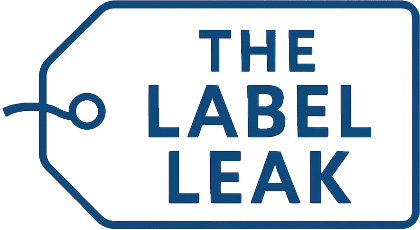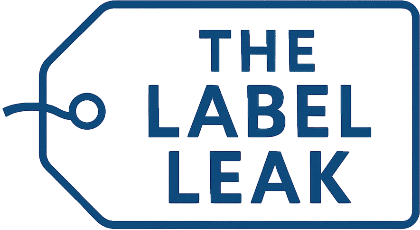Testing for recall: Why OEMs need QA that anticipates failures
From Honda’s faulty brake pedals to Mitsubishi’s frozen camera displays and Citroën’s defective Takata airbags, 2025 has made one thing clear: recalls are still catching OEMs off guard. Despite advances in simulation and test automation, defects are slipping through validation and only surfacing once they’ve reached the customer, or worse, the crash scene
These issues aren’t just technical glitches. They’re symptoms of a testing culture still rooted in linear production cycles, where quality assurance is seen as the last hurdle before sign-off, not the intelligent filter it should be. In a connected, software-driven, global vehicle landscape, QA can no longer be a passive checkpoint. It has to be predictive, agile and deeply attuned to failure, not just success.
Simulated stress must meet real-world signals
Testing in isolation is no longer enough. The best engineering teams today aren’t just running lab simulations, they’re triangulating data from multiple streams: virtual models, real-world telematics and in-field service observations. Only by feeding these insights into a live feedback loop can we truly mirror the environments in which vehicles operate.
Let’s take a common example. A brake pedal may pass 1,000 hours of fatigue testing in a controlled rig. But what happens when a software update subtly alters the feedback ratio between pedal pressure and ABS activation? Or when colder-than-expected climates expose a weakness in the material compound used in a spring return mechanism? These are not theoretical scenarios. Indeed, they’ve triggered real recalls in the past 12 months. A study by CarVertical, cited by the BVRLA, found that nearly 72 % of recalled cars in the UK remain on the road with unresolved safety issues, based on data from January 2023 to September 2024.
Hardware-software harmony is no longer optional
The biggest challenge for modern QA teams is not catching the obvious faults, it’s understanding how software updates interact with existing hardware configurations. A simple firmware patch can introduce regressions in entirely unrelated systems. And yet, in many OEMs, the teams testing software aren’t the same ones validating the physical components.
Take the Mitsubishi rear-view camera recall. The failure wasn’t in the hardware itself, but in the software that managed image feed timings. After certain power cycles, the camera feed would fail to initialize, leaving drivers with a black screen. Harmless? Not when you consider that reverse cameras are now legally mandated safety equipment in many markets. That’s not just a system failure. It’s a compliance failure.
Good QA needs to test systems together. That means running over-the-air (OTA) updates in test environments that include worn components, battery-degraded ECUs or real-world connection disruptions. Engineers must ask: what happens when software arrives late, or halfway through an ignition cycle? What happens when it interacts with an already-fatigued component? These are questions that must be asked – and answered – before vehicles leave the line.
What modern recall resilience looks like
While testing often focuses on prevention, there’s another layer that is just as vital: preparedness. Even with the best testing regimes in the world, things go wrong. Components degrade, suppliers vary, customers behave unpredictably. So the best QA environments now include recall-readiness as a feature and not an afterthought.
This includes building traceability into every part, patch and procedure. Engineers must be able to track which vehicles received which batch of hardware, which software version, and under what calibration parameters. That level of traceability turns weeks of investigative triage into hours and gives OEMs the confidence to act early.
Best-in-class systems, such as those aligned with having a ‘recall ready’ model, link QA data directly with aftersales workflows. If a new fault emerges in the field, it’s not just the engineering team that gets alerted. It triggers service-side activity too: parts ordering, customer contact, repair scheduling. In high-profile cases like Citroën’s stop-drive airbag alert, where failure could mean fatality, that kind of agility is not a luxury but a requirement.
Testing needs to think like a risk manager
Here’s the shift OEMs must make: testing should no longer be a badge of quality, it should be a function of risk. The most resilient brands are those that don’t just test for performance, but actively simulate failure modes, recall scenarios and OTA faults.
Imagine designing a braking system not just for lifespan, but for a scenario where a supply chain issue forces a part substitution mid-cycle. Or validating a software update not just on a new car, but on a five-year-old model with half a million miles and a dodgy fuse. These aren’t edge cases anymore. In today’s aftermarket, they’re the norm. Engineers need to adopt a recall mindset asking not just “does it work?” but “what if it doesn’t?” Because in a recall situation, the cost of failure is not just financial, it’s reputational. And in the worst cases, it’s human.
Recalls don’t begin at the roadside but in the test lab
If 2025 has shown us anything, it’s that recalls are no longer rare, nor easily contained. In a global market where software is deployed remotely and hardware is manufactured across continents, QA must do more than test boxes – it must anticipate consequences.
Honda’s brake pedal issue, Mitsubishi’s camera glitch and Citroën’s airbag tragedy all began long before drivers noticed anything wrong. They began with an overlooked failure mode, a missing test scenario or a communication gap between software and system validation.
Testing today must act like the first line of recall defence. Not reactive. Not routine. But ready. Because when the headlines hit, it’s not just the car on trial – it’s the whole process that brought it to market.
Further reading: ‘Reengineering mobility: The SDV revolution beyond CASE’, by Adam Konopa, mobility digital technology director at Intellias
Testing for recall: Why OEMs need QA that anticipates failures


